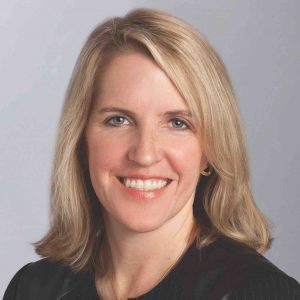By: Max Crampton-Thomas

2 min read February 2020 — Duke Energy Florida is not just increasing the amount of renewable power it is offering customers, with several solar plants coming online, it is also looking to harden its grid to protect it from increasingly harsh storms in the southern United States, as well as in cutting-edge “self healing” technology to reduce the impact of outages, according to Catherine Stempien, the company’s president.
What advances have been made regarding the company’s clean energy projects in the region?
We are still in the process of building 700 megawatts of solar in our system and that will be completed by 2022. We are making significant progress on that. We are either operating or in the construction phase for about half of those megawatts. We brought two new solar plants online in December, at Lake Placid and Trenton, and we have two being completed in the first half of this year in Fort White and DeBary, with two others just announced in North Florida.
The other area where we have really made progress is in battery storage. We have said that we are going to build 50 megawatts worth of battery projects, and we have made announcements for three of these projects located in Trenton, Cape San Blas and Jennings. The battery charges when the sun is up and when the sun is down the battery discharges that energy. But batteries can do much more for our system. We have been testing a lot of cases for battery use, and the projects that we are going to be doing will help improve reliability for our customers, giving them more reliable power.
How is the company ensuring customers get the energy they need?
Our customers want power, and they want that power to stay on 24/7. We are midway through deploying our self-healing grid technology. About 50% of Pinellas County is covered by this technology now. If you think about the electric grid as a highway system, when you have a traffic jam somewhere in that system you want Waze or Google Maps to redirect you around that traffic jam. The grid works the same way: if we have an outage, or a tree falls down on a line, you want to be able to redirect the power around that problem to make sure that people get their energy. This technology does that automatically. We have sensors and communications devices all over our grid that automatically reroute the power and minimizes the problem, reducing the number of customers impacted. People might see a one-minute outage and then it will go back up again. In 2019, 150,000 outages did not happen because our system was able to reroute power, and that prevented 10 million minutes of customer interruptions.
Why is Duke Energy pushing forward with sustainable power solutions?
Duke Energy Corp, of which we are a part, decided it was going to push itself and target climate goals that we are going to hold ourselves to. By 2030, we want to reduce our carbon footprint by 50% from 2005, and by 2050 we want to be at net zero. Duke Energy Florida is going to be an important part of the enterprise goal. We have a line of sight on how we are going to meet the 2030 goal, but we don’t have an exact line of sight into how we are going to do it by 2050. We need certain technologies to advance faster, and we need the regulators to come along with us. We believe you have to set yourself aspirational goals.
How much should companies involve themselves in sustainability efforts?
Over the last number of years, we have seen an increase in the intensity and the characteristics of storms hitting the United States. Florida is at a higher risk of getting hit by those storms. We believe we need to plan for storm events. In 2018, two major storms hit our service territory, one in Florida and one in North Carolina. Hurricane Michael was a Category 5 storm that devastated the areas it hit. We had to completely rebuild the distribution system and 34 miles of transmission lines. But it left pretty quickly.
Another storm, Hurricane Florence, hit the Carolinas. It was a water storm that stalled over the eastern part of North Carolina and dumped rain for days, causing extreme flooding, which makes it difficult to access substations and lines. It is hard to predict these kinds of events, so we are looking to constantly improve our response, making sure we have the right crews, with the right equipment, available to restore power.
The Florida legislature recognized these challenges and passed legislation in 2019 to encourage utilities to invest in hardening their grids for storms. It cleared the regulatory path for us to work on storm hardening, from making poles stronger, undergrounding certain parts of the grid, and replacing lattice towers with monopole towers. All of this work is part of a 10-year plan to harden our system so we are prepared.
To learn more about our interviewee, visit:
